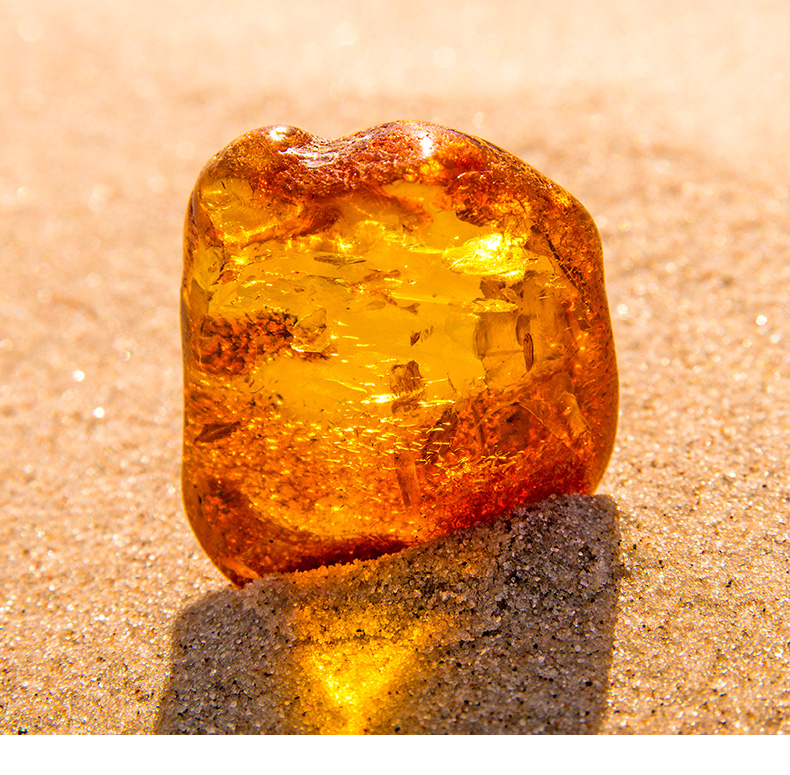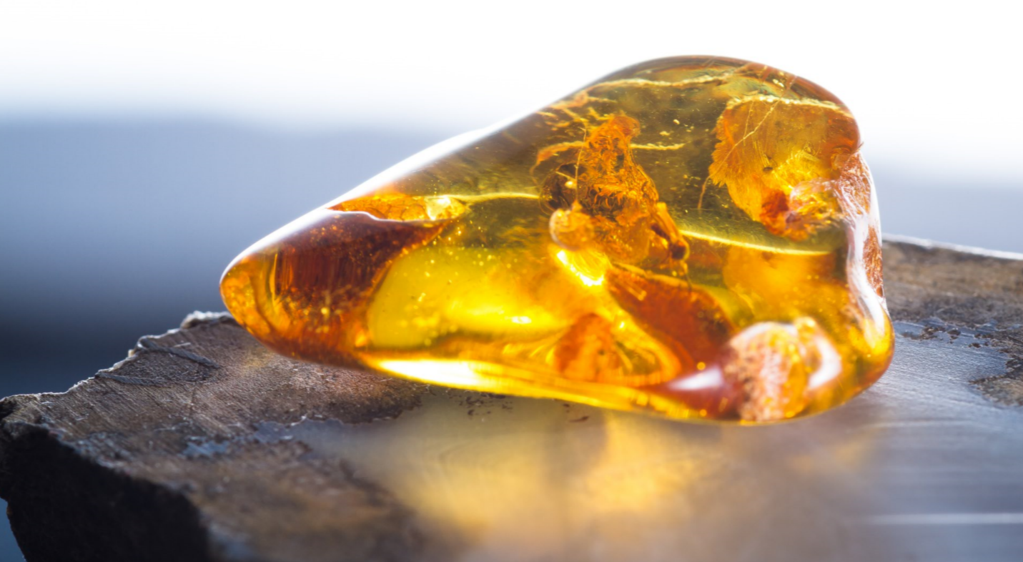Amber Rene Hagerman - Unearthing Ancient Resin
The mention of Amber Rene Hagerman often brings to mind a particular fascination with the deep past, especially when it comes to the ancient material known simply as amber. It is, you know, a captivating substance, truly. People find themselves drawn to these solidified remnants of bygone forests, curious about the stories they hold. This ancient tree sap, hardened over countless years, offers a unique window into life that existed millions of years ago, which is pretty amazing when you think about it.
It's a wonder, really, how something so delicate can last for such an incredibly long stretch of time. From tiny insects caught in a sticky flow to bits of leaves or even small creatures, each piece of this golden material carries a little piece of history within its translucent depths. We are, more or less, talking about a natural time capsule, preserved in a way that allows us to peek at what things were like eons ago, and that, is that, quite a thought.
This discussion will explore some fascinating aspects of amber, drawing from various observations and experiences shared by those who appreciate its unique qualities. We will look at how to tell the real from the not-so-real, where these incredible finds typically originate, and the kinds of amazing things sometimes found preserved within. So, get ready to discover a little more about this truly special material, a bit like embarking on a quiet exploration of time itself.
Table of Contents
- What is Amber, and Why Does it Matter?
- How Can We Tell Real Amber from Fakes?
- Where Does Amber Come From?
- What Kinds of Life Do We Find Inside Amber?
- Taking Care of Your Amber - What You Need to Know?
- Is All Amber the Same?
- Finding Your Own Piece of Amber - Tips for Collectors.
- What Makes Amber So Special, After All?
What is Amber, and Why Does it Matter?
Amber, in its simplest description, is ancient tree sap that has hardened over a very, very long time. It is not, for example, petrified wood, which is wood that has turned to stone. The way amber holds onto things is quite different from how stone forms. If you have something that looks like petrified wood, it is almost certain that it is not amber because the conditions needed for each to stay intact are just so unalike. This distinction is really important for anyone trying to understand what they have found or what they are looking at, you know, when examining these ancient pieces of earth's past.
The true value of this hardened sap, you see, comes from its remarkable ability to keep things safe inside. It can, quite literally, capture a moment in time. Imagine a tiny creature, perhaps an insect, walking along a tree branch millions of years ago, and then, just like that, it gets stuck in a fresh drip of resin. That drip then hardens, gets buried, and over eons, it becomes amber, keeping the creature exactly as it was. This is why people find it so endlessly fascinating; it gives us a direct look back into the ecosystems of a time long, long gone. It is, basically, a window to a forgotten world, preserved for us to gaze upon today.
How Can We Tell Real Amber from Fakes?
There is, as a matter of fact, a lot of skepticism out there when it comes to knowing if a piece of amber is truly authentic. Some people are just too quick to doubt its genuine nature. It is a common worry, and for good reason, since there are many things that look like amber but are not. For instance, you might see something advertised with inclusions, meaning little things trapped inside, but sometimes these are just resin, which is a modern plastic-like material, with insects placed inside that were never alive in the ancient sap. It is, in short, a clever deception, and it happens more often than you might think.
One simple way to check, for example, if a piece is genuine amber, especially Baltic amber, is with a black light. Real amber, when placed under a black light, usually changes to an opaque, creamy color. This reaction is a good sign that you have the real thing. If a very clear piece of amber does this, it is a pretty strong indicator of its true origin. Of course, this is just one method, and it is not foolproof for every single type of amber, but it is a quick and easy test for many common pieces. It is, actually, a neat trick that helps separate the genuine from the imitation, giving you a bit more peace of mind.
Where Does Amber Come From?
Amber comes from various places around the globe, and it is worth noting that amber from different regions can have distinct characteristics. The most common type, by far, is Baltic amber. This particular kind of amber comes from ancient pine and woodland areas that thrived roughly 40 million years ago. These vast, old forests produced enormous amounts of resin, which over millions of years, transformed into the beautiful, golden material we recognize today. So, when you hold a piece of Baltic amber, you are literally holding a bit of a forest that existed before many of the animals we know today even walked the earth, which is pretty cool.
Beyond the Baltic region, other places yield their own unique forms of this ancient tree sap. For instance, there has been a somewhat recent finding of Sumatran blue amber. This is, you know, a relatively new discovery, and it is quite striking because of its distinct blue hue. One piece, for example, might weigh around 10.1 grams and be semi-rough, meaning it has not been fully polished. The origin of amber tells us a lot about its age, its appearance, and even the types of things that might be preserved within it, making each regional variety special in its own way. It is, basically, a geographic fingerprint for these ancient treasures.
What Kinds of Life Do We Find Inside Amber?
One of the most thrilling aspects of amber is the tiny, perfectly preserved life forms sometimes trapped within. You might, for instance, come across a decent-sized scorpion from Burma, encased in amber that is probably about 100 million years old. What is really interesting about such a find is how the scorpion's tail sort of curves down at a 90-degree angle. This detail, you know, can tell scientists a little something about how the creature was moving or reacting right at the moment it became stuck in the sticky resin. It is a snapshot, frozen in time, offering hints about ancient animal behavior, which is really quite remarkable.
Another common find, especially in Baltic amber, is a very nicely sized caddisfly. These are, as a matter of fact, fairly common little creatures to find preserved in pieces from that region. They are delicate insects, and to see them so perfectly held within the clear, golden material is truly a marvel. Each tiny leg, each delicate wing, remains intact, providing scientists with detailed information about ancient insect species that might otherwise be lost to time. It is, in a way, like having a perfectly preserved specimen from a natural history museum, but one that you can hold right in your hand, and that, is that, a unique experience.
Taking Care of Your Amber - What You Need to Know?
Taking care of amber, whether it is a piece from your dad's collection or a new purchase, requires a gentle touch. Unlike harder materials, amber and copal, which is a younger, softer resin, can be quite delicate. If you apply too much pressure or move too quickly when cleaning or polishing, you can easily cause problems. For example, excessive speed and pressure can lead to the material heating up, which in turn might cause it to crack. It could also result in deeper scratches that are, frankly, a pain to get rid of later. So, a light hand is, you know, absolutely key.
I once had a piece of Baltic amber from my dad's collection, and I polished just one side of it. I really liked the look of the rough, natural surface on the back, so I left that as it was. When you are working with it, you have to be pretty decent with your approach. The goal is to bring out its natural beauty without causing any harm. This means understanding that each piece has its own quirks and sensitivities. You are, basically, trying to enhance its appearance without disturbing its ancient essence, which, in some respects, requires a thoughtful touch.
Is All Amber the Same?
No, not all amber is the same, and there are distinct differences between amber that comes from various regions. As mentioned earlier, Baltic amber is the most widely recognized and abundant type. It comes from ancient pine and woodland areas that existed roughly 40 million years ago, giving it a particular set of characteristics, like its typical golden hues and its reaction to black light. This specific origin story gives Baltic amber its unique properties, from its general appearance to the kinds of ancient life it tends to preserve. It is, you know, the standard by which many other types are often compared.
However, other regions offer their own distinct versions. The Sumatran blue amber, for instance, is a newer discovery and stands out with its striking blue color, which is quite different from the typical yellows and oranges of Baltic varieties. The age of the resin, the type of tree it came from, and the geological conditions it endured all play a part in how a piece of amber looks and feels. So, while they are all fossilized tree sap, their individual histories mean that each regional type has its own special charm and unique qualities. It is, basically, a fascinating study in natural variation, offering a wide array of beautiful pieces to explore.
Finding Your Own Piece of Amber - Tips for Collectors.
For those looking to acquire their own piece of this ancient material, whether it is for a collection or just for personal enjoyment, there are a few things to keep in mind. If you are looking to purchase online, for example, it is a good idea to know when new pieces might become available. Sometimes, sellers post new amber items at a specific time, like 7 PM GMT. So, you just convert that time to your own time zone to know when is the best moment to check the website. This little bit of planning can make a big difference in finding a piece you truly like, giving you, you know, a better chance at getting what you want.
Also, when buying online, you really need to make sure that the website can ship to your location. It might seem obvious, but it is an important detail that can sometimes be overlooked. Checking the shipping policies beforehand can save you a lot of trouble and disappointment later on. Beyond that, it is always a good practice to look closely at the images provided and read descriptions carefully. You want to make sure you are getting what you expect, especially since some pieces, like that 10.1 gram semi-rough piece of blue amber from Sumatran finds, might have specific characteristics you are looking for. It is, essentially, about being a smart shopper when seeking these natural wonders.

Amber explained in the jewellery encyclopedia

Amber Gemstone: Properties, Meanings, Value & More

Amber Meanings, Properties and Uses - CrystalStones.com